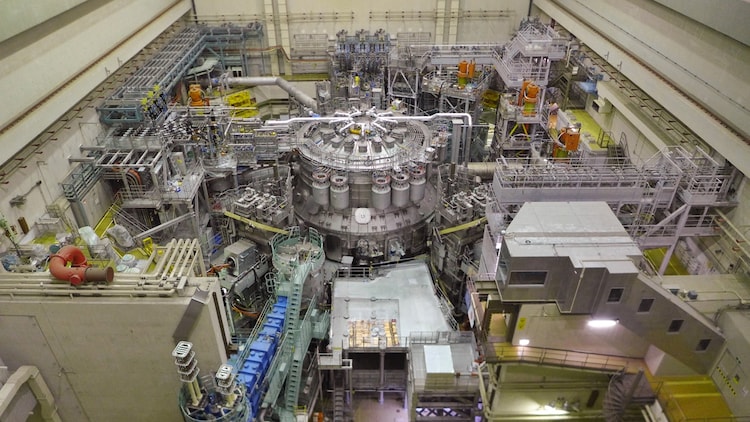
World's largest nuclear fusion reactor that mimics the Sun just came online
Unlike traditional nuclear fission used in power plants, which splits atomic nuclei, fusion mimics the sun's energy production by merging two nuclei, potentially offering a safer and more abundant energy source.

In Short
- Fusion mimics the sun's energy production
- The JT-60SA is a six-story-high tokamak
- The objective is to explore the viability of fusion
Japan has unveiled the world's largest operational experimental nuclear fusion reactor. This colossal machine, dubbed JT-60SA, is housed in a hangar north of Tokyo in Naka, and represents a pivotal moment in the quest for clean and limitless power.
Unlike traditional nuclear fission used in power plants, which splits atomic nuclei, fusion mimics the sun's energy production by merging two nuclei, potentially offering a safer and more abundant energy source.
The JT-60SA, a six-story-high tokamak, is designed to contain and control plasma heated to a staggering 200 million degrees Celsius. The objective is to explore the viability of fusion as a secure, expansive, and carbon-neutral net energy source, where the energy produced surpasses is more than the input required for its production.
This joint venture between the European Union and Japan serves as a precursor to the International Thermonuclear Experimental Reactor (ITER) currently under construction in France. Both projects share the ambitious goal of achieving net energy gain from fusion, a milestone that could revolutionize our energy systems.
Sam Davis, the deputy project leader, emphasised the collaborative effort behind the JT-60SA, involving over 500 scientists, engineers, and 70 companies from Europe and Japan. At the inauguration, EU energy commissioner Kadri Simson hailed the reactor as "the most advanced tokamak in the world" and a significant milestone in fusion history. She projected that fusion could become a central component of the global energy mix later this century.
The pursuit of net energy gain from fusion was recently achieved at the National Ignition Facility in the United States, marking a landmark achievement with its inertial confinement fusion method.
This success fuels optimism for the JT-60SA's potential to contribute to a future powered by fusion energy.
Fusion energy stands out for its safety advantages over fission, as it carries no risk of catastrophic accidents like the Fukushima disaster in 2011 and generates minimal radioactive waste.
As nations grapple with climate change and seek to reduce reliance on carbon-emitting fossil fuels, the JT-60SA's progress offers a glimpse into a future where clean, unlimited power could be a reality.
